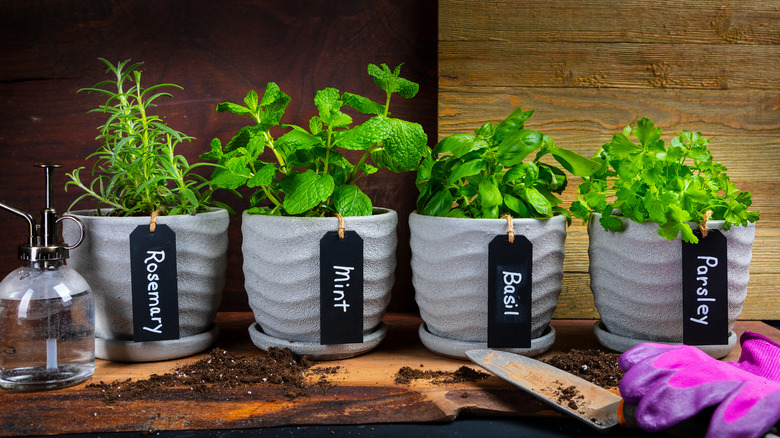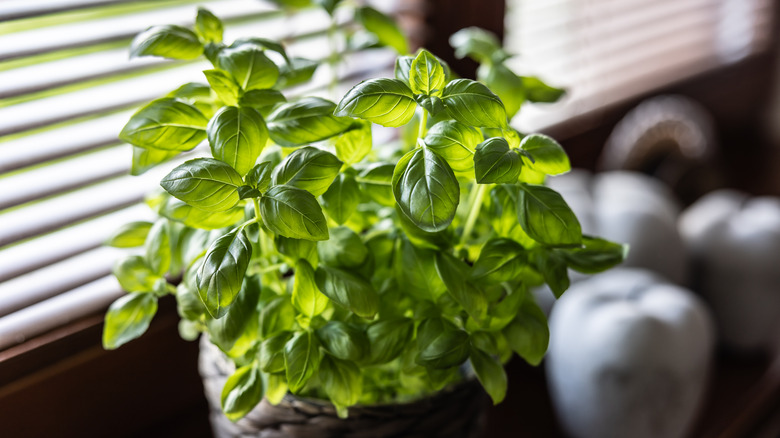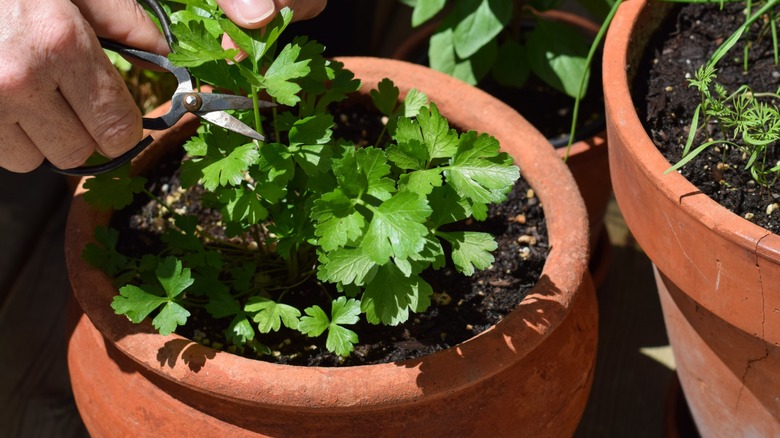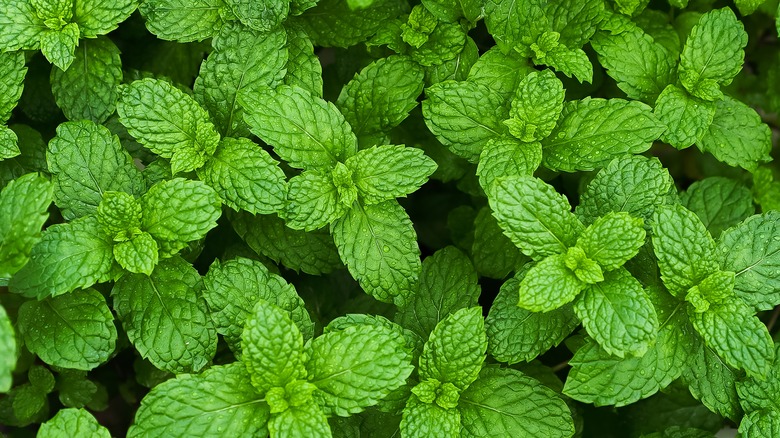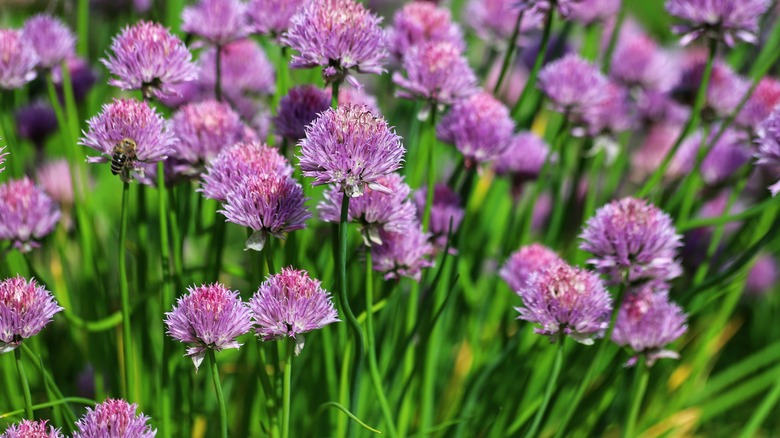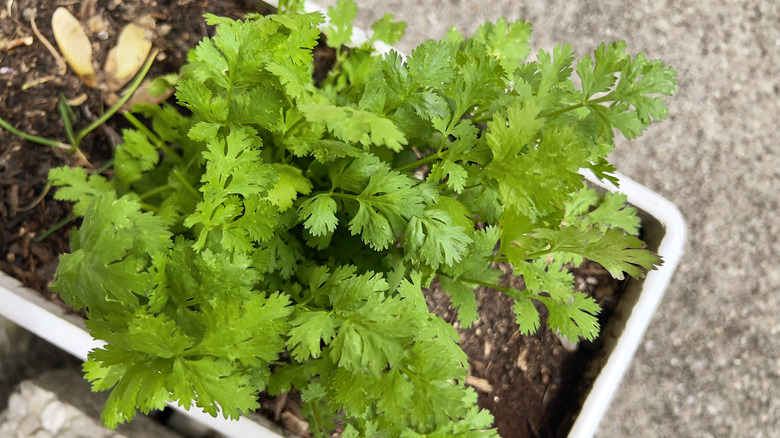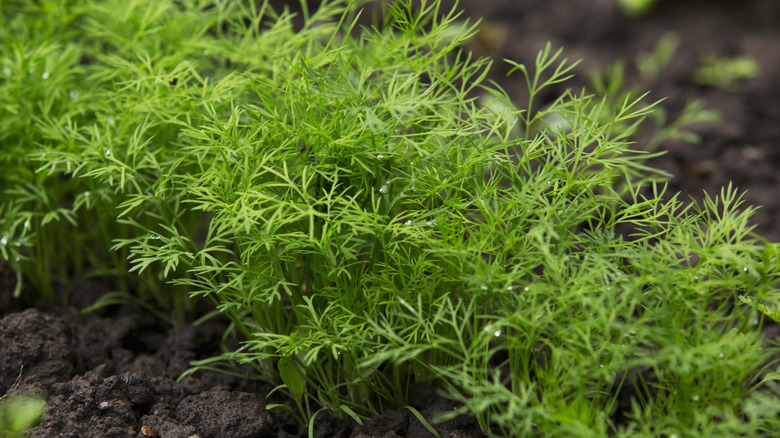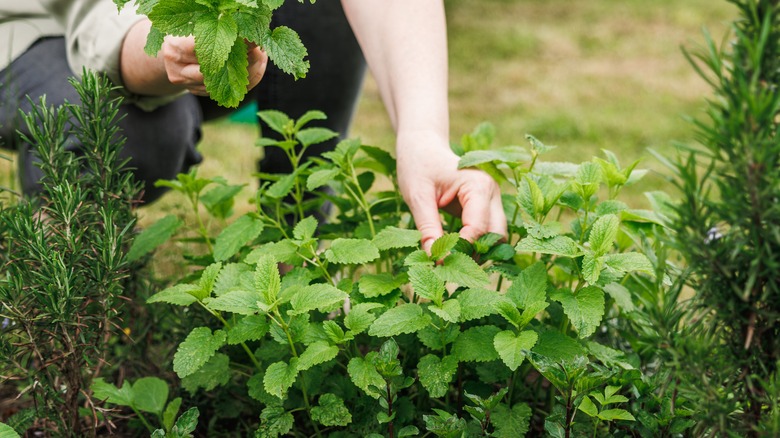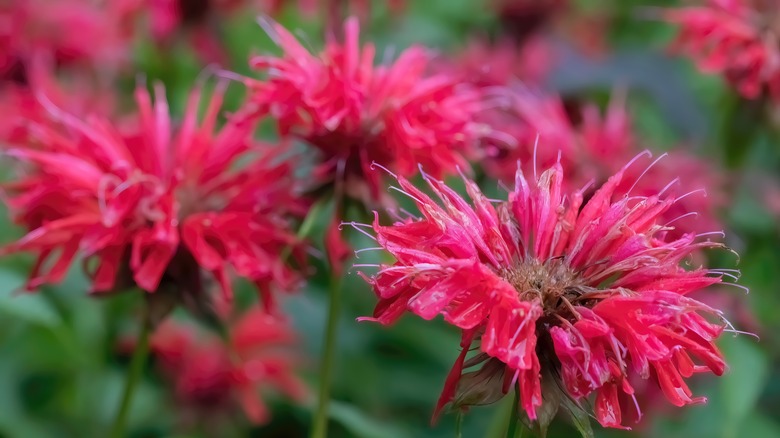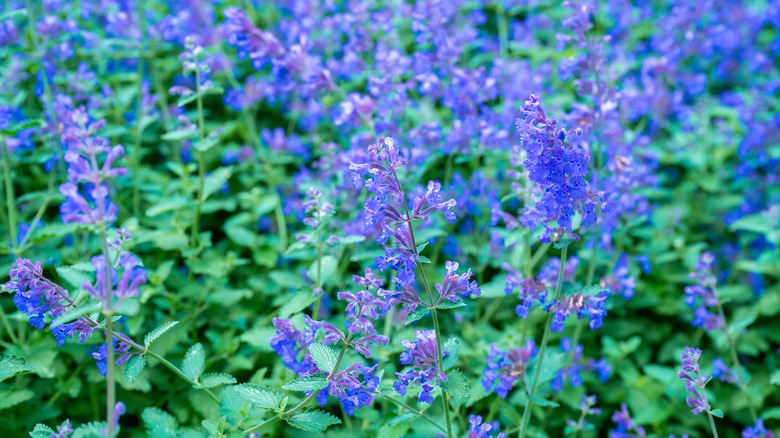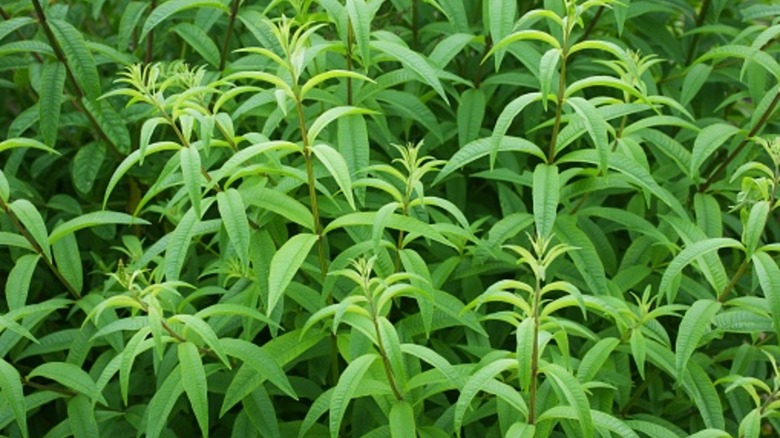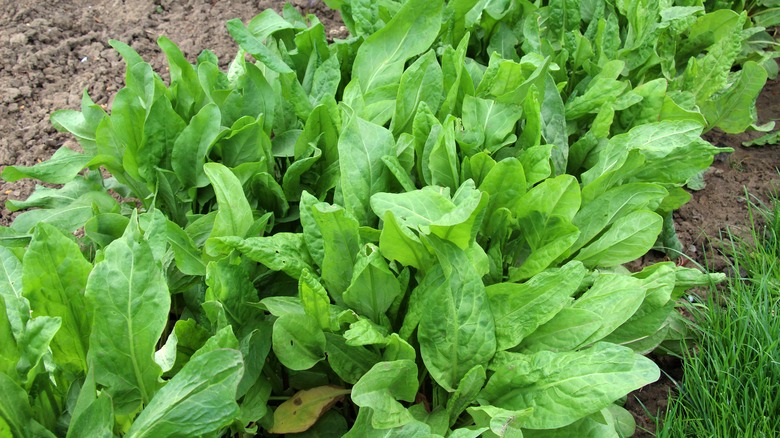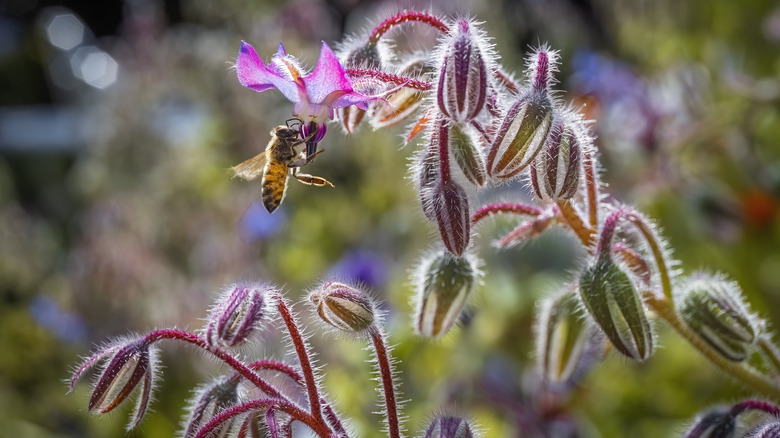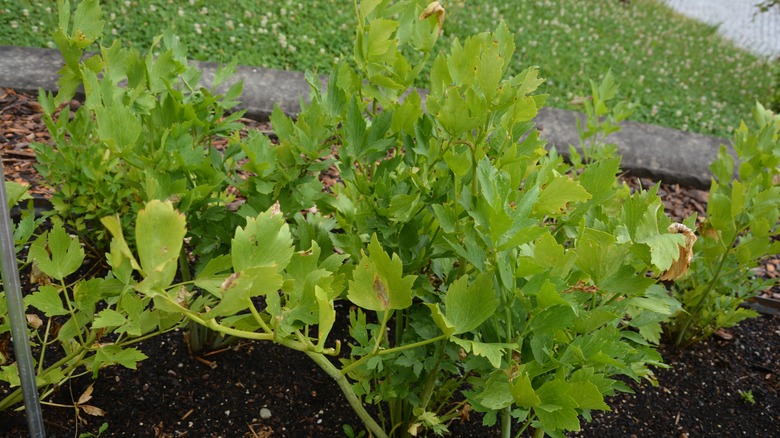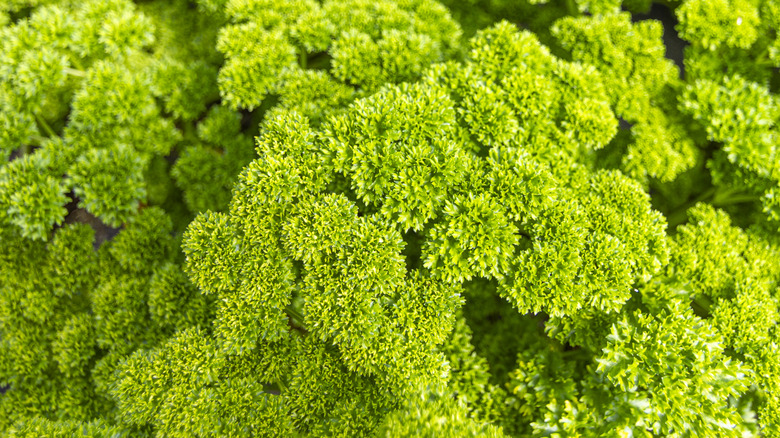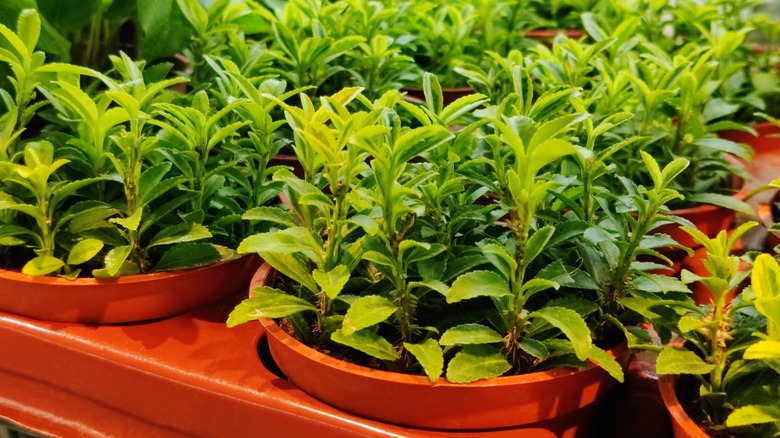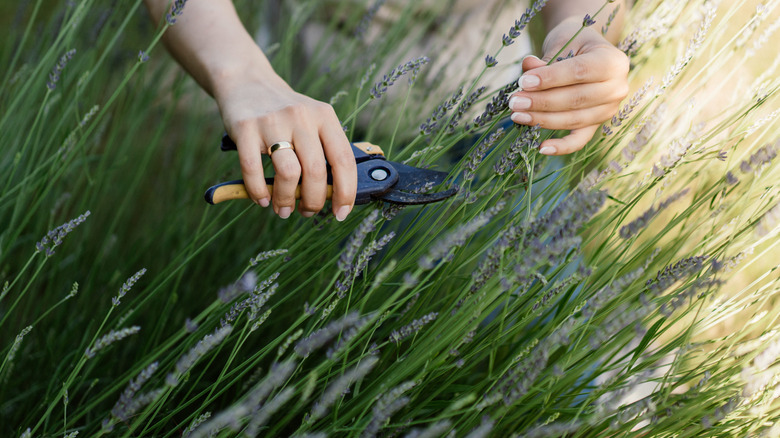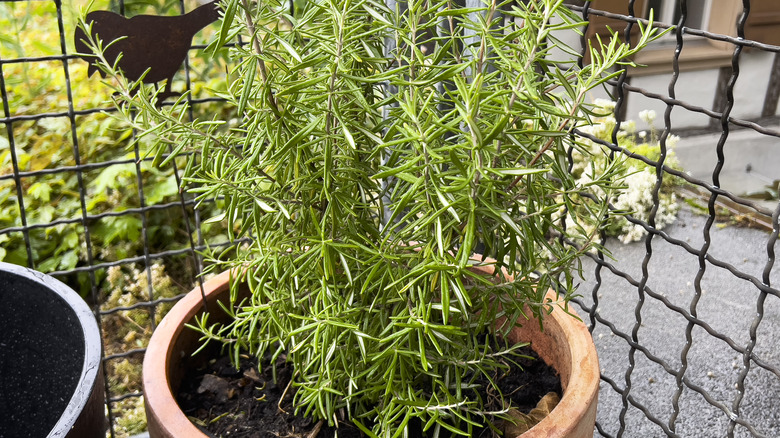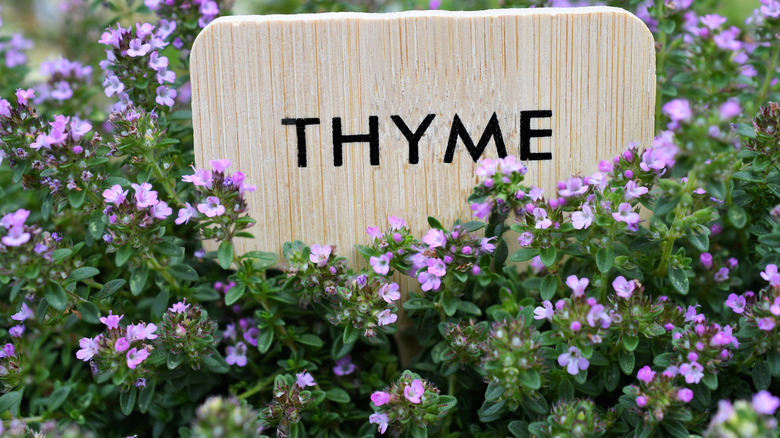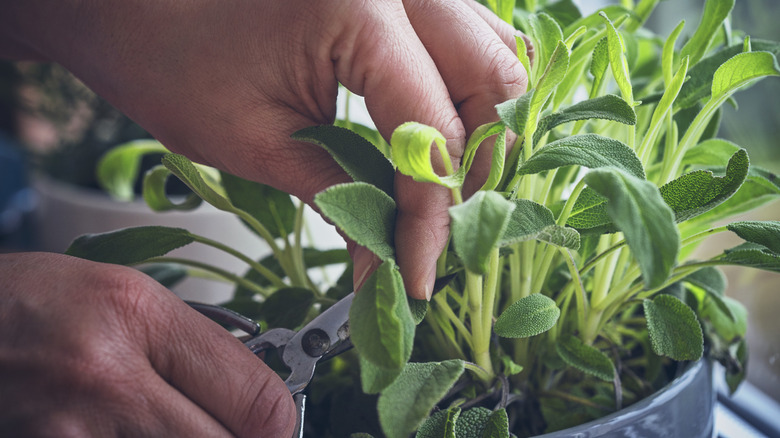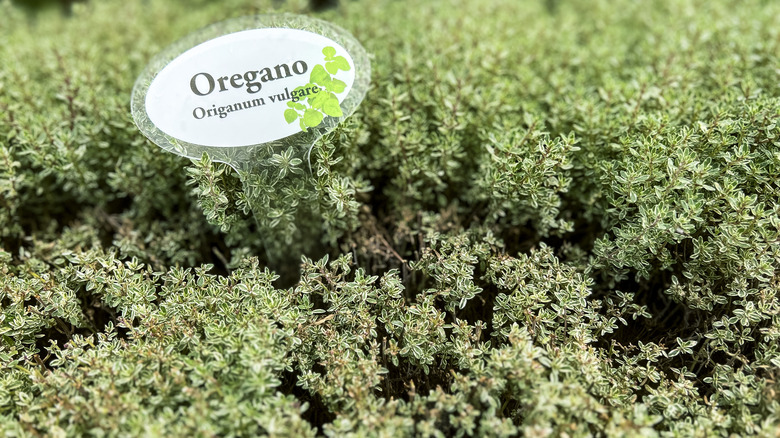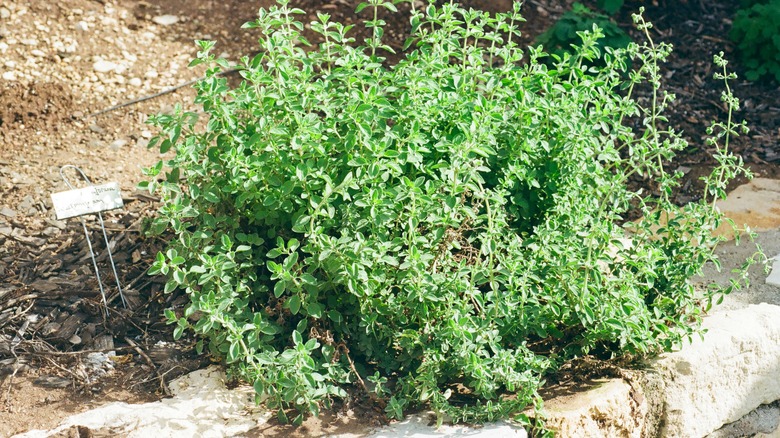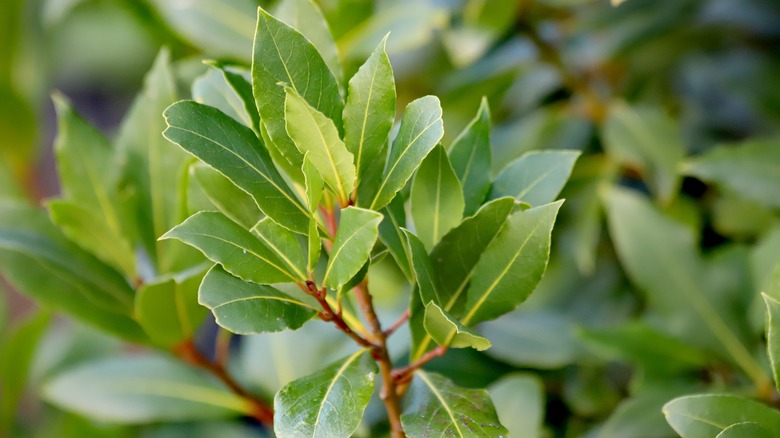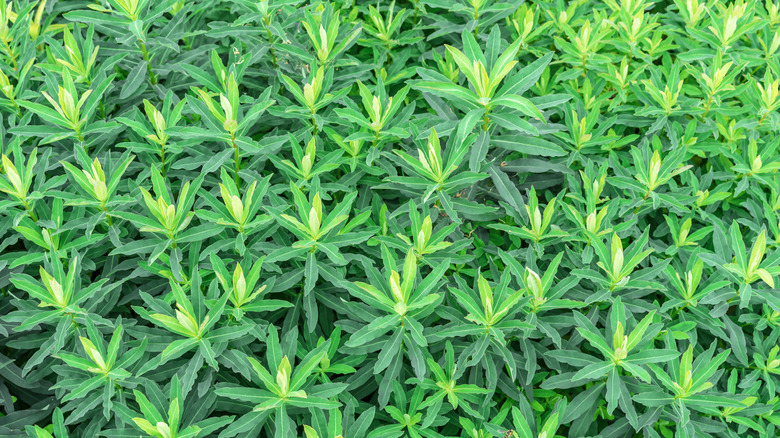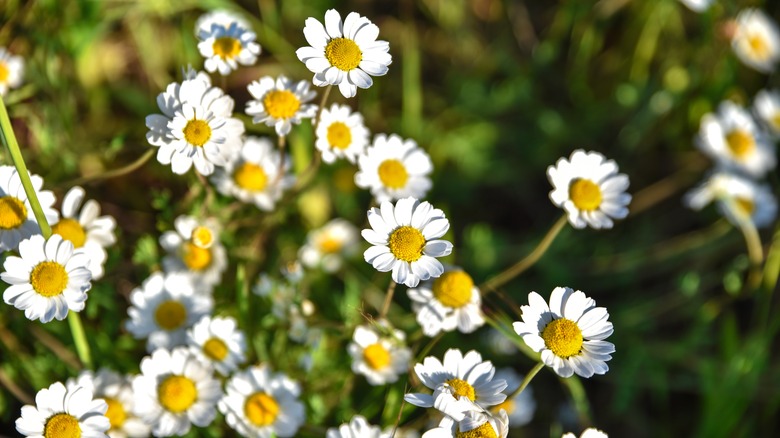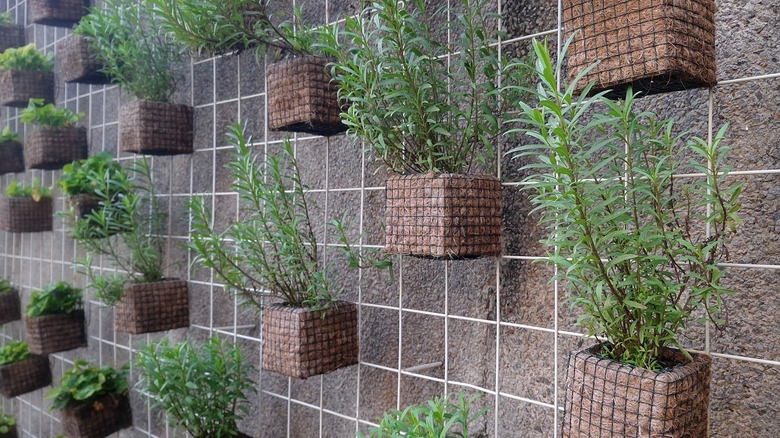15 Herbs In Your Garden That Benefit From Coffee Grounds (And 10 That Don't)
Whether you're someone who loves incorporating homegrown herbs into their cooking or just wants to take advantage of the stress-relieving properties of gardening, starting an herb garden is a hands-on hobby one can pursue all year long. Herb gardens are often viewed as beginner-friendly due to their low maintenance and ability to control output by using containers. However, each type of herb has its own needs and growing requirements, which can be overwhelming for new gardeners to nail down. One hack that can help some herbs grow is to use coffee grounds as a soil enhancer that can boost growth for herbs like basil and parsley.
While some herbs take in the benefits of coffee grounds well, there are some herbs you should avoid using this method with. These herbs include thyme and sage, as well as lavender and chamomile. For the herbs that do benefit from coffee grounds, it's important to understand the best processes. For example, depending on the herb, you can either add the coffee grounds directly to the mulch or soil, or create a liquid mixture that can be used as fertilizer. Always use coffee grounds sparingly, regardless of the plant, and opt for unflavored, organic varieties when possible. Additionally, it may be helpful to use composted grounds to help curb the acidity.
Basil
An incredibly popular culinary herb, basil (Ocimum basilicum) is a beginner-friendly herb that is ideal for kitchen countertop gardens. The sweet basil plant is best suited for USDA Hardiness Zones 3 to 11 when grown outside as an annual and requires a consistent watering schedule to remain healthy. Basil is also an herb that is commonly affected by slugs, who like to munch on the plant and leave holes behind on the leaves. A small amount of coffee grounds added to the soil can be a strong deterrent for snails, keeping your plant safe.
Parsley
Another culinary herb that can benefit from coffee grounds is parsley (Petroselinum crispum), since the coffee grounds can improve soil composition and drainage. Parsley is a relatively heavy feeder that thrives in rich soil and requires regular watering to keep the soil moist, but it should also be well-drained. This biennial herb is also a tasty snack for snails, so a bit of extra coffee grounds added to the soil can help keep these mollusks away. It does best in warmer areas, growing in zones 3 through 9 as an annual, as well as indoors.
Mint
Most mints are fast-growing perennials and hardy in zones 3 through 9 that spread with ease. Specifically, spearmint (Mentha spicata), a common garden mint, thrives in rich, moist soil when placed in a full sun location. Spearmint does well with a balanced diet, thriving with a bit of a nitrogen boost. Composted coffee grounds can provide a nitrogen boost to soil, but ensure they are fully broken down; otherwise, they can actually cause more harm than good. Although mint is not listed as invasive, you might find it helpful to grow any variety in a pot to prevent spreading.
Chives
Chives (Allium schoenoprasum) are a perennial herb in the onion family. These herbs grow to form rows of thin, onion-flavored leaves. The taste of chives is a bit milder than that of yellow or white onions, which is great for people who want to avoid the pungent taste. They are hardy in zones 3 through 9 and appreciate fertile soil with a pH between 6.0 and 7.0. Incorporating a small amount of composted spent coffee grounds is a simple way to promote healthy soil and keep slugs away.
Cilantro
Also known as coriander when it comes to the seeds, cilantro (Coriandrum sativum) is a fast-growing herb known for its flavorful leaves. Cilantro grows quickly in cool weather and is among the herbs that bolt when exposed to excessive heat. While cilantro isn't a heavy feeder compared to some herbs, it does respond well to a little extra nitrogen. When composted coffee grounds are used sparingly, they can provide that gentle help to produce more leaves early on in the growth cycle.
Dill
Dill (Anethum graveolens) is a flavorful herb with delicate growth and a love for full sun. It grows fairly tall at around 2 to 4 feet and, like many herbs, appreciates some added nutrients during the rapid growth phase. A subtle addition of coffee grounds around dill can supply nitrogen for lush foliage and tasty sprigs. Take the time to make sure the grounds are well-composted and evenly dispersed in a thin layer, as dill enjoys rich soil but also good drainage.
Lemon balm
If you're looking for a hardy herb to grow this summer, lemon balm (Melissa officinalis) is known for being beginner-friendly. However, these plants can become somewhat overgrown by weeds if not trimmed regularly. Hardy in zones 4 through 9 and boasting a sweet lemon scent, lemon balm thrives in rich, moist soil and partial sun, so it tends to respond well to a small amount of coffee grounds. Lemon balm does not like standing water, so make sure the coffee grounds are not affecting drainage.
Scarlet bee balm
Known as bergamot (Monarda didyma) or monarda, this is a perennial herb best grown in zones 4 through 9. Bee balm is native to North America and produces stunning red flowers. It's also common for bee balm to be used as an herb in teas. When a small amount of composted coffee grounds is added to the soil of a bee balm plant, it can function as a mild fertilizer. Additionally, since bee balm is prone to powdery mildew, mixing coffee grounds into the soil rather than leaving them as a dense top layer is important.
Catnip
Cat owners can rejoice knowing they can grow the irresistible catnip (Nepeta cataria) herb in hardiness zones 3 through 9. Catnip is a close relative of mint and can survive in poor soil, but it does respond well to extra nutrients. Adding some composted coffee grounds, which break down into humus in your catnip herb garden, can result in full plants with more of those aromatic leaves. Even non-cat owners can use catnip to help attract pollinators to the garden. Please note that catnip can self-seed and spread, so consider growing it in containers or indoors.
Lemon verbena
Lemon verbena (Aloysia citrodora) is a shrub that grows well in pots in warm climates, such as zones 8 through 10. This herb is valued in the culinary world for its flavorful lemony leaves and medicinal properties. Lemon verbena prefers soil with good drainage, so compost containing spent coffee grounds won't upset the growing process. However, one of the most important elements when growing lemon verbena is drainage as a whole, so be sure to only use coffee grounds sparingly.
Sorrel
Sorrel (Rumex acetosa) is a herb with a bright, lemony taste. This plant is hardy in zones 3 through 11 and is known as a wild herb in some areas. Sorrel produces a lot of leaves, especially when given nutrient-rich additives. With this, when composted coffee grounds are worked into the pot, they add organic matter and nitrogen that the plant appreciates. Sorrel also likes moisture, so the water-retentive quality of coffee grounds can be an advantage.
Borage
If you're looking for an herb that also provides stunning flowers, the star-shaped blooms of the borage (Borago officinalis) plant are an ideal choice. Borage is often used as a companion plant that grows in full sun and is fairly tolerant of different soils. However, what borage really loves is a steady amount of organic matter. Coffee grounds can be a helpful addition to borage's environment by enriching the soil and continuing that cycle of nutrient return. Spread a thin layer of used grounds around borage and use a rake to distribute or add grounds directly to the compost.
Lovage
Lovage (Levisticum officinale) is a perennial herb that grows well in zones 3 through 11. This plant is known to resemble a giant stalk of celery and even has a similar flavor profile. Lovage plants can reach 6 feet tall, and they benefit from fertile soil to help support this growth. With this, composted coffee grounds can be an excellent addition to soil that helps produce green leaves and thick stems. Lovage can spread aggressively, so plant it in a container to prevent it from taking over the garden.
Chervil
Chervil (Anthriscus cerefolium) is a delicate herb that sometimes goes by the name French parsley. While not as popular as some herbs, you may recognize chervil for its unique licorice-type flavor profile. You can grow chervil in zones 7 through 9, with guidelines such as a cool environment and partial shade. Chervil plants do best in rich soil, meaning the addition of composted coffee grounds can boost nutrients and help with retaining moisture.
Stevia
You may be familiar with stevia (Stevia rebaudiana) as a non-calorie sweetener. This plant is often called candyleaf or sugarleaf, growing best in zones 10 and 11. Whether growing indoors or outdoors, you'll need to make sure this herb has loamy soil to keep strong moisture levels. Stevia plants like a hearty, well-draining soil, so adding a small amount of composted coffee grounds can promote these conditions.
Lavender
Lavender (Lavandula angustifolia) is an incredibly popular Mediterranean herb known for its fragrant purple flowers. You can find lavender in a multitude of uses, ranging from cosmetics to even infusions into teas and culinary dishes. Lavender is a full-sun plant that should be grown in zones 5 through 8. This herb does not typically require any additional fertilizer, and caffeine in particular can cause issues with lavender, meaning it's best to avoid any additives like coffee grounds.
Rosemary
Rosemary (Salvia rosmarinus) is an herb with a signature flavor that is bitter and somewhat pine-like. This plant does best in zones 8 through 11 and, like several other herbs, can withstand dry soil and drought conditions well. Rosemary also tends to do well in soil that is on the neutral side or with a pH of around 6.0 to 7.0. Avoiding excess fertilizers and any additives, including coffee grounds, is a good way to promote a stable soil pH.
Thyme
One common herb you might have a dried bottle of in your spice cabinet is thyme (Thymus vulgaris). Thyme is a small perennial that, surprisingly, produces more flavor when grown in hard or poor soil conditions. Additionally, thyme does not require fertilization and can end up losing flavor if overfed. If you're growing this herb, it will be much happier without a coffee fix, though a bit of crushed eggshell can give thyme plants a calcium boost.
Sage
A bold herb found in holiday dishes, sage (Salvia officinalis) is a perennial subshrub with flavorful leaves. Sage is related to the mint family and will do best in zones 4 through 8 with full sun. Sage requires little to no fertilizer and does well in various types of gardens, ranging from rocky soil to very dry conditions. The strong and resilient nature of sage means that adding an element like coffee grounds can affect the soil's balance, potentially causing less flavorful leaves.
Oregano
Oregano (Origanum vulgare) is yet another Mediterranean herb that grows best in zones 4 through 8. Many are familiar with this herb for its uses in cooking across different cuisines, as well as for the abundant antioxidant properties oregano holds. Coffee grounds have antibacterial properties that can lead to the soil losing important nutrients, which is not ideal for herbs like oregano.
Marjoram
Marjoram (Origanum majorana) is a type of oregano that is sometimes called sweet marjoram. This herb shares many of oregano's preferences, such as full sun and moist but well-drained soil. With this, marjoram plants are susceptible to a weakened flavor if the soil levels have too much nitrogen. Adding compost with spent coffee grounds to the soil or fertilizer for marjoram plants might help the leaves to grow, but can leave you with herbs sporting an unpleasant taste.
Bay laurel
Bay laurel (Laurus nobilis) is a type of evergreen shrub that's well known for its leaves being used in the culinary world. While it's not technically an herbaceous plant like the others, it's a common herb in the sense of enhancing cooking. Bay laurel does best in hardiness zones 8 through 10, as well as indoors in small pots, making it ideal for those working with minimal space. While coffee may not cause too many issues with the bay laurel shrub, it's a slow-growing plant that doesn't require much feeding as a whole.
Winter savory
Winter savory (Satureja montana) is a perennial herb with a bold pepper flavor that is native to the Mediterranean. This means the herb is hardy in zones 5 through 11, thriving in full sun with neutral to alkaline soil. Coffee grounds are slightly acidic, and while they don't actually lower the pH of the soil, it's best to avoid them when trying to grow an herb like winter savory that prefers a neutral environment with no additives.
Chamomile
Chamomile (Chamaemelum nobile), specifically Roman chamomile, is a fan-favorite herb for its medicinal properties. This herb is not as popular in tea blends thanks to the bitter taste, but DIYers might find themselves growing it to add to things like topical lotions or a steamy bath. What makes chamomile plants unique is their ability to naturally balance and promote healthy soil, which is why they are sometimes referred to as the "plant's physician." With this herb being such a good companion plant, it's best to skip the coffee grounds and let the chamomile roots work their magic.
Tarragon
Tarragon (Artemisia dracunculus), specifically French tarragon, is a culinary herb that is hardy in zones 3 through 8. However, it's important to note that French tarragon is usually grown from cuttings instead of seeds. Tarragon is in the daisy family (Asteraceae) and likes dry soil. In fact, another type of tarragon known as Russian tarragon is known to do well in poor soil and rough conditions. Adding coffee grounds would do exactly what tarragon doesn't need, which is make the soil more moisture-retentive.
